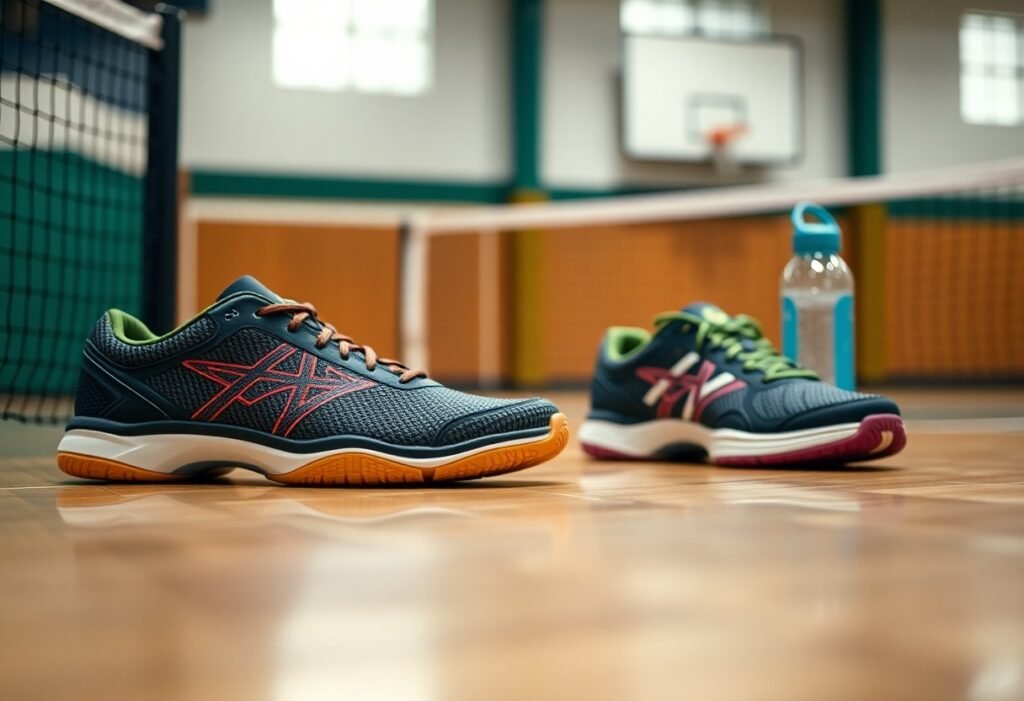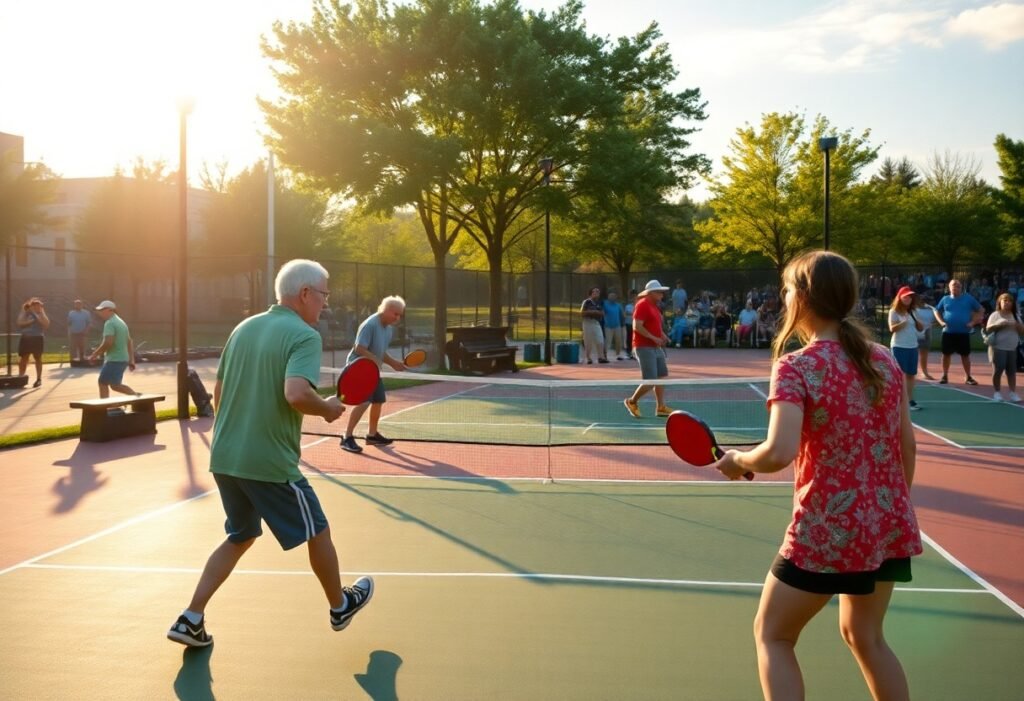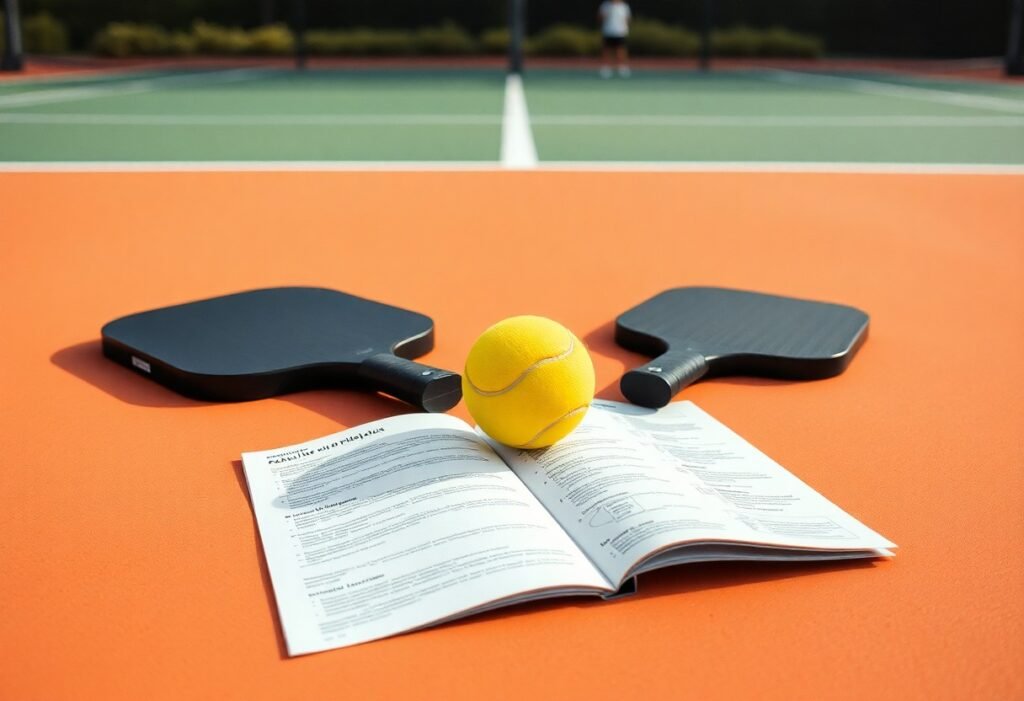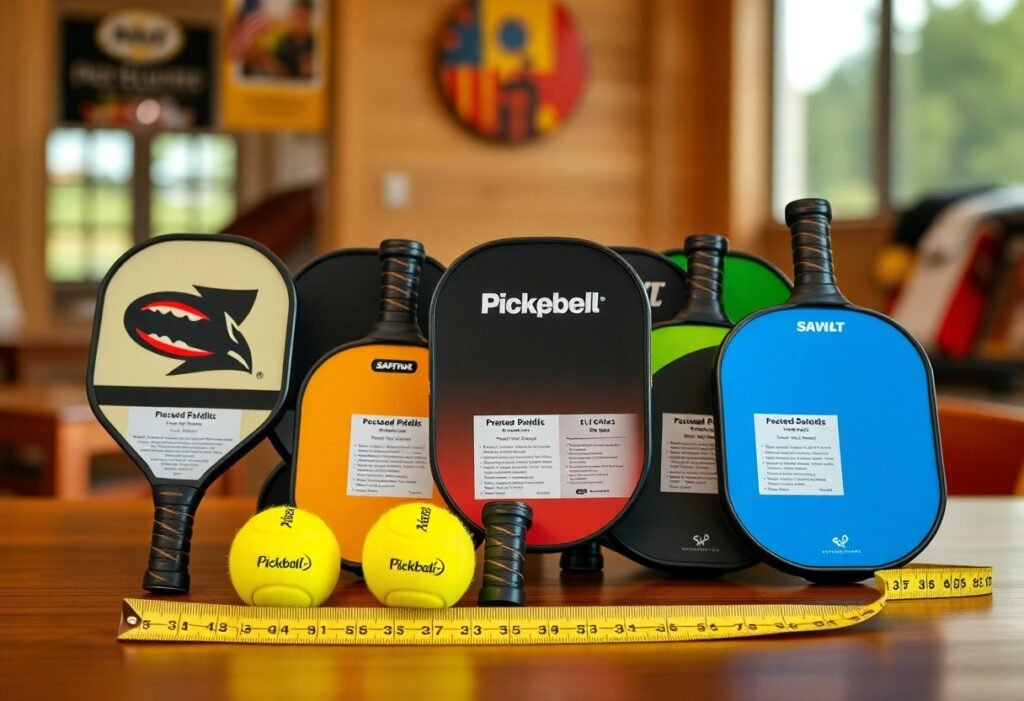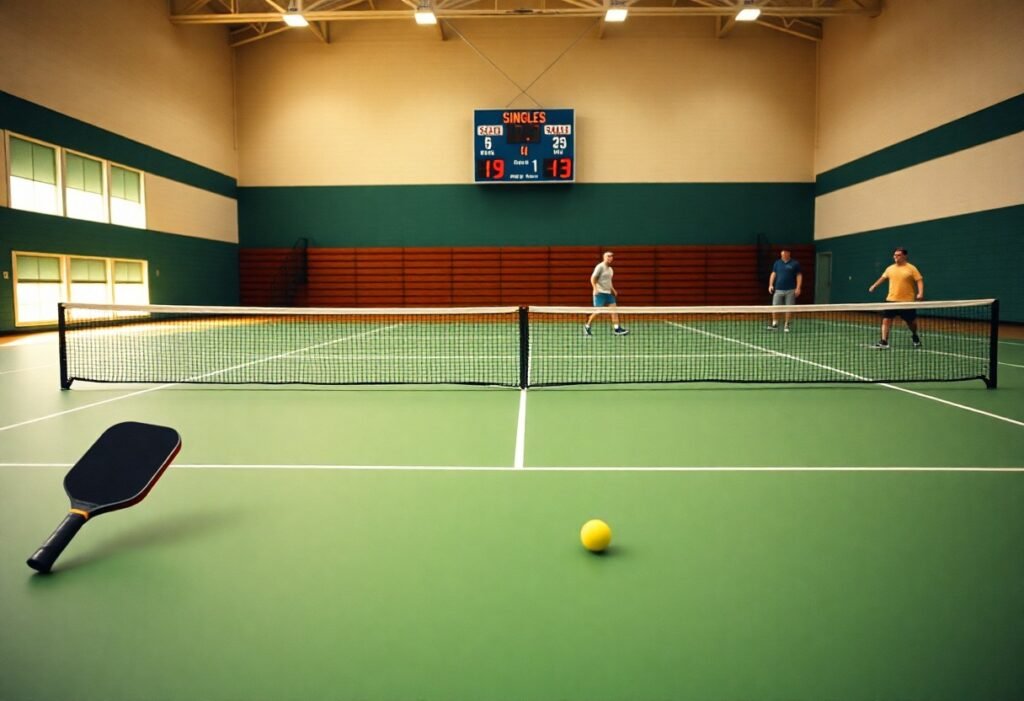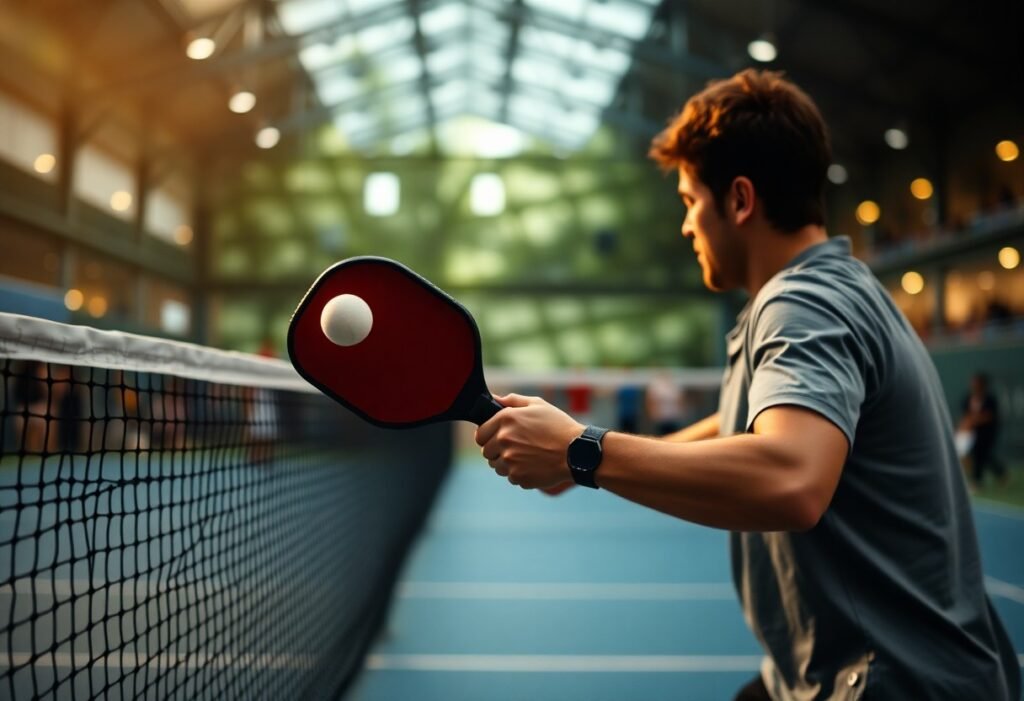With the right pair of pickleball shoes, you can enhance your game while ensuring your safety on the court. Choosing shoes that offer proper grip and comfort is vital to prevent injuries and improve your performance. The right footwear can stabilize your movements, allowing you to pivot, sprint, and stop without the risk of slipping or straining an ankle. Invest in shoes designed specifically for pickleball to elevate your playing experience and make every match enjoyable.
Key Takeaways:
- Choose shoes with non-marking rubber soles for optimal grip on indoor courts.
- Look for lightweight, breathable materials to enhance comfort during play.
- Invest in shoes with proper cushioning and support to prevent injuries.
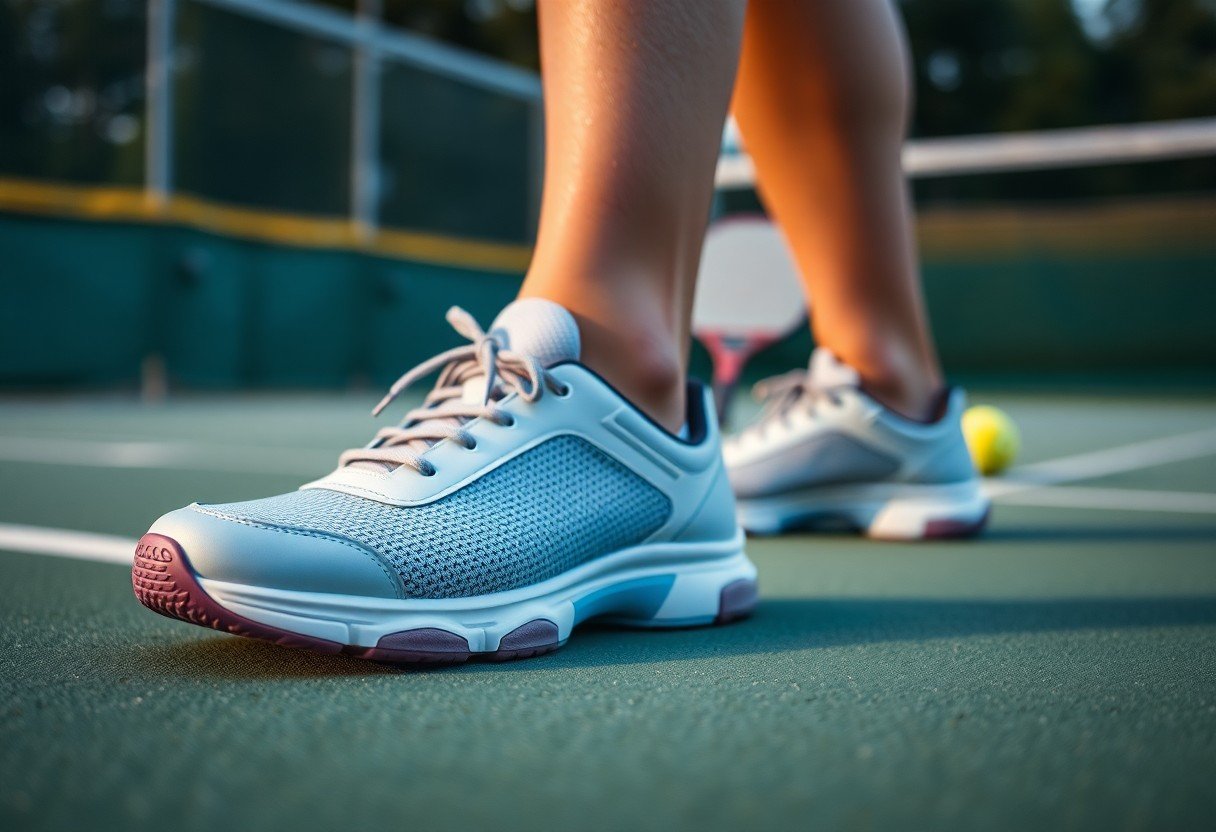
Understanding Pickleball Shoes
The Importance of Choosing the Right Shoes
Selecting the right shoes is important for your performance and safety on the pickleball court. Inadequate footwear can lead to discomfort, decreased agility, and increased risk of injury. Proper shoes will improve your grip, provide necessary support, and allow you to move freely during fast-paced games. Investing in specialized pickleball shoes ensures that you can enjoy the game without distractions or physical limitations.
Key Features to Look For
When searching for the ideal pickleball shoes, focus on several key features that enhance your overall experience. These factors contribute to your performance, comfort, and safety while playing. Prioritizing these aspects will help you avoid frustration and injury on the court. Perceiving the importance of these features will lead you to make an informed purchasing decision.
- Non-marking rubber soles for optimal traction
- Lightweight materials to promote agility
- Breathability to keep your feet cool
- Cushioning for shock absorption
- Ankle support to prevent injuries
- Fit and size to ensure comfort
Paying attention to these features can significantly influence your performance. Non-marking rubber soles are important to maintain grip during quick lateral movements. Lightweight designs enable faster foot speed, while breathability and cushioning prevent overheating and discomfort over extended periods of play. Strong ankle support minimizes injury risks, and the right fit prevents blisters. Perceiving these features will enhance your pickleball playing experience and improve your gameplay.
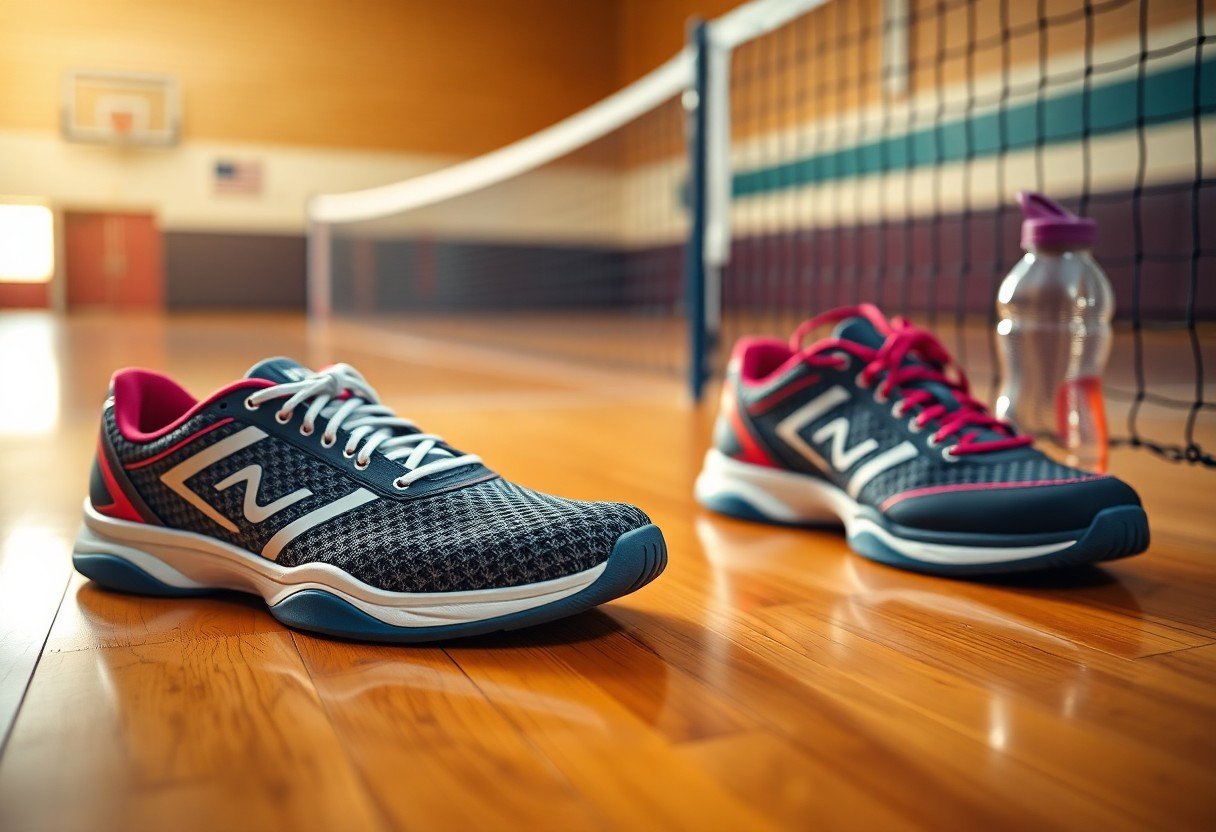
Grip and Traction
Types of Outsoles
Choosing the right outsole is important for maximizing grip and performance on the court. The two primary types of outsoles are indoor and outdoor, each designed for specific surfaces. Indoor outsoles are often made of non-marking rubber, while outdoor options feature tougher materials for durability.
- Indoor outsoles provide superior grip on smooth surfaces.
- Outdoor outsoles are designed for durability and traction on rough courts.
- Non-marking materials protect court surfaces.
- Multi-directional tread patterns enhance stability.
- Knowing the right outsole will greatly impact your performance.
| Indoor Outsoles | Non-marking and smooth for excellent grip. |
| Outdoor Outsoles | Durable and rugged for varied surfaces. |
| Flat Tread Patterns | Best for stability in lateral movements. |
| Herringbone Patterns | Provide traction for quick starts and stops. |
| Pivot Points | Designed for quick turns without slipping. |
Rubber vs. Synthetic Materials
Choosing between rubber and synthetic materials for your pickleball shoe is vital. Rubber soles often offer better grip and shock absorption, while synthetic materials can enhance lightweight and breathability.
Rubber outsoles are known for their superior traction on court surfaces. They provide excellent grip, which can help prevent slips, particularly on indoor courts. In contrast, synthetic materials can lower the shoe’s weight, allowing for faster movements. However, they may not offer the same level of grip as rubber. The ideal shoe integrates these materials to balance traction and comfort, ensuring you can play your best while reducing the risk of injury.
Traction Patterns and Their Impact
The pattern of traction on your pickleball shoe plays a significant role in your on-court performance. Different patterns, like herringbone or multidirectional, affect how well you can pivot, sprint, or change direction.
Traction patterns are strategically designed to enhance your movement. Herringbone patterns provide solid grip for lateral movement, while multi-directional patterns allow quick accelerations and stops. The right traction pattern enables you to maintain balance during intense gameplay, helping you respond quickly to your opponent’s shots without fear of slipping. Therefore, evaluating traction patterns is key to choosing the right pickleball shoe for your needs.
Comfort and Fit
Sizing Considerations
Finding the right size is imperative for your comfort and performance. Ensure that your pickleball shoes have about a thumb’s width of space between your longest toe and the front of the shoe. This room allows for natural foot movement and accommodates slight swelling during play. You can refer to the Pickleball Shoe Guide: Podiatrist Recommendations … for specific size charts and expert tips.
Cushioning and Support
A shoe’s cushioning and support directly impact your comfort level on the court. Look for shoes that feature ample cushioning in the midsole to absorb shock during your movements. This is especially important if you engage in longer matches or are prone to joint discomfort.
The type of foam or gel used in the midsole can enhance your experience significantly. For example, a soft EVA foam offers lightweight cushioning, while gel pads provide targeted comfort in high-impact areas. Additionally, ensuring that your shoes have a structured design can prevent your foot from rolling, which enhances stability and reduces the risk of injuries during rapid directional changes.
Breathability of Materials
The materials used in your pickleball shoes should promote ventilation to keep your feet cool and dry. Look for shoes made with mesh inserts or breathable fabrics that encourage airflow. This is particularly vital during intense games, where sweat can accumulate.
Shoes constructed with mesh not only enhance breathability but also contribute to overall shoe flexibility, allowing for a better range of motion. Dual-layer constructions often optimize breathability without sacrificing durability, ensuring you remain comfortable throughout your matches. Choosing the right material helps prevent blisters and excessive sweating, enhancing your overall performance on the court.

Safety Considerations
Ankle Support and Stability
Your pickleball shoes should provide adequate ankle support to help prevent injuries. Look for models with a higher cut that extends above the ankle to enhance stability during lateral movements. Features like padded collars and sturdy lacing systems further secure your feet, allowing you to make quick pivots without risking sprains or strains.
Shock Absorption Properties
Opt for shoes with advanced shock absorption properties, as they diminish the impact on your joints during play. A well-cushioned shoe setup, often including EVA foam or gel inserts, reduces the stress on your feet, improving comfort and overall performance.
Research shows that players who prioritize shock-absorbing technologies can experience reduced fatigue and less risk of lower limb injuries. The right cushioning not only enhances your endurance but also supports the natural mechanics of your foot, allowing for faster recovery after intense gameplay. A shoe with a solid midsole can effectively distribute impact forces, maximizing your stability and keeping your energy levels up throughout matches.
Toe Protection Features
Look for shoes with reinforced toe protection to safeguard your feet from unexpected impacts and scrapes. Toe caps made from durable materials enhance the shoe’s longevity while giving your toes a shield against the court’s hard surface, which can lead to painful injuries.
Incorporating a sturdy toe guard in your footwear significantly lowers the chances of bruises or calluses, especially during intense gameplay when you may inadvertently stub your foot. Shoes with extra padding or hard-wearing materials provide both comfort and safety, letting you focus on your game without worrying about potential toe injuries from sudden movements or falls on the court.
Types of Pickleball Shoes
| Type | Description |
|---|---|
| Court Shoes | Designed specifically for indoor court sports, offering excellent grip and lateral stability. |
| Cross-Training Shoes | Versatile shoes suitable for various activities, generally providing moderate support for court play. |
| Specialty Pickleball Shoes | Tailored with features that cater specifically to the demands of pickleball, enhancing performance. |
| Running Shoes | Not recommended for pickleball due to their lack of lateral support and grip. |
| Outdoor Shoes | Designed for tough surfaces, focusing on durability rather than specialized traction. |
Court Shoes vs. Cross-Training Shoes
Court shoes are ideal for pickleball as they provide the necessary grip and support for lateral movements. In contrast, cross-training shoes offer versatility but may lack the specific features needed for optimal performance on the court. The right choice will depend on the intensity of your game and personal preferences.
Specialty Pickleball Shoes
These shoes are engineered with specific features to enhance your experience on the court. They often include added cushioning, improved traction, and reinforced areas to support quick lateral movements. Moreover, many specialty options incorporate innovative materials designed for breathability and comfort during extended play. This leads to better performance and reduced risk of injury.
Choosing Based on Playing Style
Your playing style significantly impacts the type of shoe that suits you best. If you employ aggressive lateral movements, look for shoes with strong ankle support and a stable outsole. For those with a more relaxed playing approach, comfort and cushioning might take precedence. This ensures that your footwear complements your game effectively.
Understanding your playing style will help you prioritize features when selecting shoes. For instance, if you frequently engage in fast-paced rallies, shoes designed for stability can prevent ankle injuries. Alternatively, if you prefer a more casual playstyle, prioritize lightweight and comfortable designs to enhance your enjoyment on the court.
Maintenance and Care
Cleaning Your Pickleball Shoes
To extend the life of your pickleball shoes, it’s important to clean them regularly. Use a soft brush or cloth to remove dirt and debris from the surface and soles. A mixture of mild soap and water can help cleanse stubborn stains. Avoid harsh chemicals that could damage the materials. After cleaning, air-dry your shoes to prevent moisture buildup, which can lead to mold and unpleasant odors.
Signs of Wear and When to Replace
Keep an eye out for signs of wear that indicate it’s time to replace your shoes. Look for visible damage such as cracks, worn-out soles, or loss of traction. If you notice a decrease in support or comfort, your shoes may no longer be providing the necessary protection. Replacing shoes every 6 to 12 months, depending on usage, can enhance your performance and reduce the risk of injury.
A general rule of thumb is if you find yourself frequently slipping or losing grip during play, it’s likely your shoes need replacing. Check the tread; when it appears smooth or uneven, it no longer provides optimal traction. Additionally, if you experience discomfort or pain in your feet after games, your shoes may not offer the support they once did, signaling it’s time for a new pair.
Storing Your Shoes Properly
Proper storage preserves your pickleball shoes’ shape and integrity. Store them in a cool, dry place away from direct sunlight, which can cause materials to degrade. Consider using a shoe tree or stuffing them with paper to maintain their form. Avoid leaving them in damp areas like a gym bag, as moisture can lead to unwanted odors and mold growth.
When you store your shoes in a designated area, like a shoe rack or box, ensure they have adequate airflow. This helps prevent the buildup of moisture and unpleasant smells. Keeping your shoes organized can also make them more accessible for your next match, ensuring that you can grab them and get to the court without delay.
Conclusion
Upon reflecting, the right pickleball shoes significantly enhance your performance by providing optimal grip, comfort, and safety on the court. You should prioritize shoes with non-marking soles and adequate cushioning to support quick movements. Look for features like stability and breathability to keep your feet comfortable during extended play. By choosing the best footwear tailored to your specific needs, you can enjoy a more enjoyable and effective pickleball experience.
FAQ
Q: Why are specific shoes important for pickleball?
A: Pickleball-specific shoes provide necessary grip on the court, support for lateral movements, and cushioning for comfort during play. Using the right shoes helps in maintaining optimal performance and reducing the risk of injury.
Q: What features should I look for in pickleball shoes?
A: Look for shoes with non-marking rubber soles for traction, good ankle support, cushioning for impact absorption, and a breathable upper material to keep your feet dry and comfortable.
Q: Can I use regular sports shoes for playing pickleball?
A: While regular sports shoes may offer some comfort, they often lack the specific support and grip designed for pickleball. Using shoes designed for the sport can enhance your performance and safety on the court.
Q: How do I choose the right size for pickleball shoes?
A: It’s vital to try on shoes in the afternoon when feet may be slightly swollen. Ensure there’s some space between your longest toe and the end of the shoe. A snug fit is ideal without being too tight, allowing for proper movement.
Q: How often should I replace my pickleball shoes?
A: Replace pickleball shoes when you notice significant wear on the soles, loss of cushioning, or decreased support. Generally, this may be every 6 to 12 months, depending on frequency of play and court surfaces.


